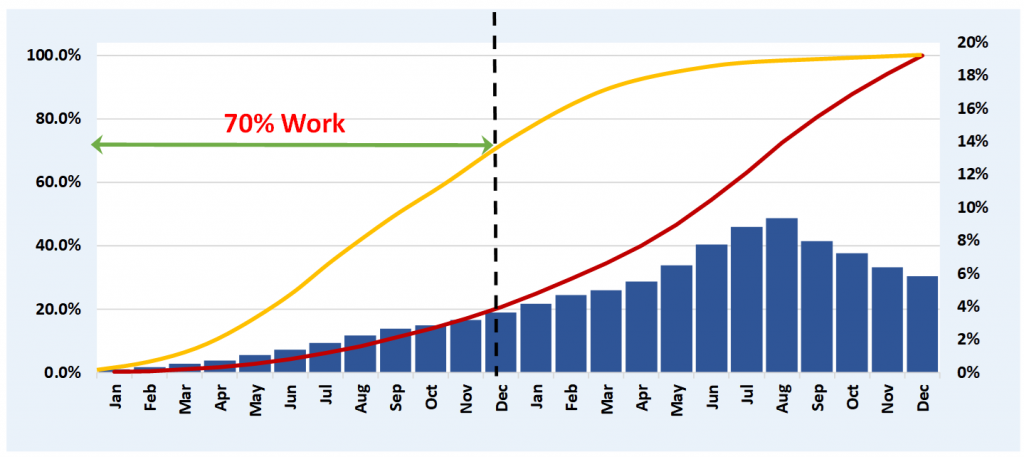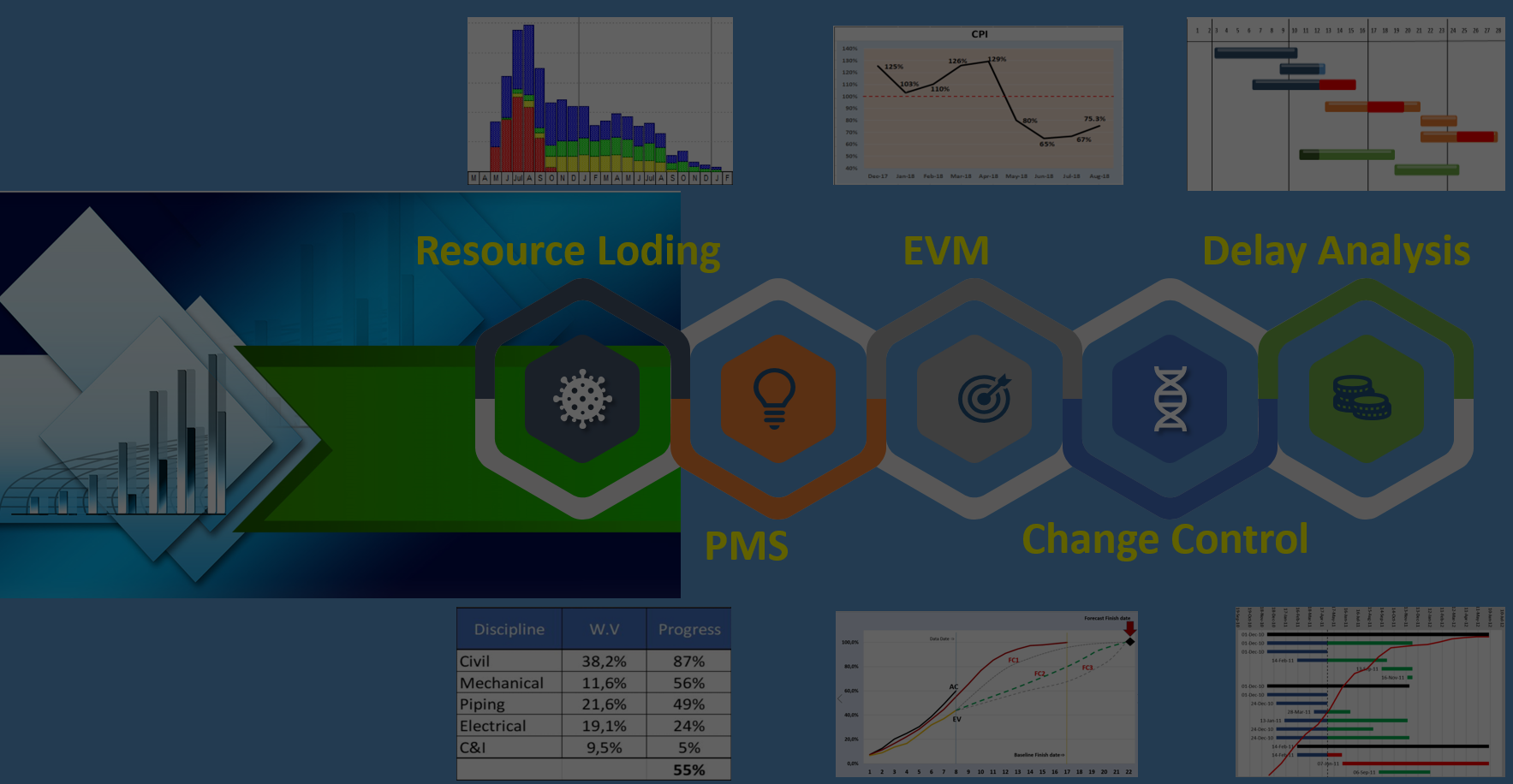08 Mar Milestone based Planned Curve
It is an undisputed fact worldwide known by both Planners and PM’s that the Planning concepts and techniques are either correctly or incorrectly implemented. For example, the S-Curve is a well-known concept which gets defined as a graphical demonstration of cumulative work/cost of the Project that has to be done throughout the Project’s life cycle. Or calculation of progress based on the steps/milestones.
The shape of an S-Curve could demonstrate/reveal many data/info about the Project, therefore, any shape will not be acceptable. Incorrect S-Curve, miss-understanding the shape and wrong data source could lead any Project to failure. So, when a client rejects an S-Curve because it is of perfect Shape, should not be an acceptable argument. The correct argument should be: what is the data source of the Curve and how did it turn out to be perfect. We recently reviewed a Project’s planning system and here are some findings on it:
- The client submits an activity list with the cost /weight value and requests the contractor to develop a Schedule using the list.
- Once the Schedule has been approved, the contractor should use the activities finish date (finish milestone) to develop a Planned curve.
- The Schedule is not required to be resource loaded because the Planned curve was developed from the finish date of the activities.
- The actual progress calculation was requested to be based on the finish date of the activities only.
The developed S-Curve was back loaded and the Client wanted to pay 70% of the project value in the last 30% of the remaining duration. Or 70% of the progress was planned to achieve in last 30% of the duration!

That implies that the system should be financially favorable to the Client because due to back loading they have more certainty to complete the project. The we asked the few following questions:
- How the remaining duration get estimated during schedule update?
- How does the Forecast Curve gets developed during execution?
- After schedule update, do the dates get updated in the Excel file?
- How do they monitor activity’s progress prior to the finish date?
- How do they calculate, how many resources (per skill set) would be required to complete the project based on the approved schedule and date?
- Have they completed any project on time? (more than 95% of their projects were late!)
- etc.
Another interesting observation was that most of the Projects were ahead of schedule until they get to the last 30% of the duration. It means, both client and contractor were having good times in early days but in the last 30% they had to take a lot of pressure and stress to earn 70% of the work! As a result, most of the projects were delayed.

So:
- Front loading / back loading should be done with caution
- The Planning system should be an integrated and flexible system and should be able to support the project to monitor the progress of activities /summary levels throughout the execution
- The Planned curve should demonstrate the cumulative work distribution
To check your planning system and identify blind spots and hidden issues, contact us now: info@khonopc.com





No Comments